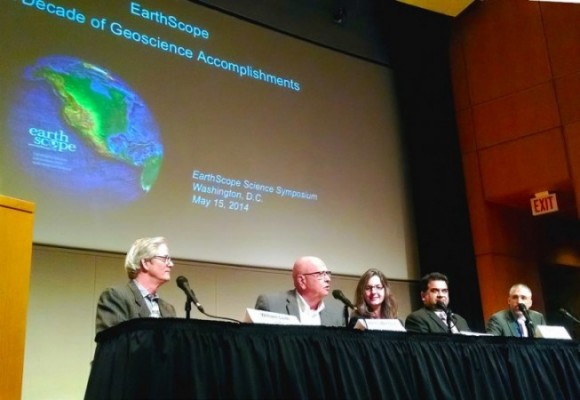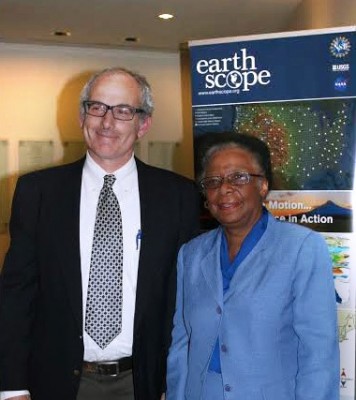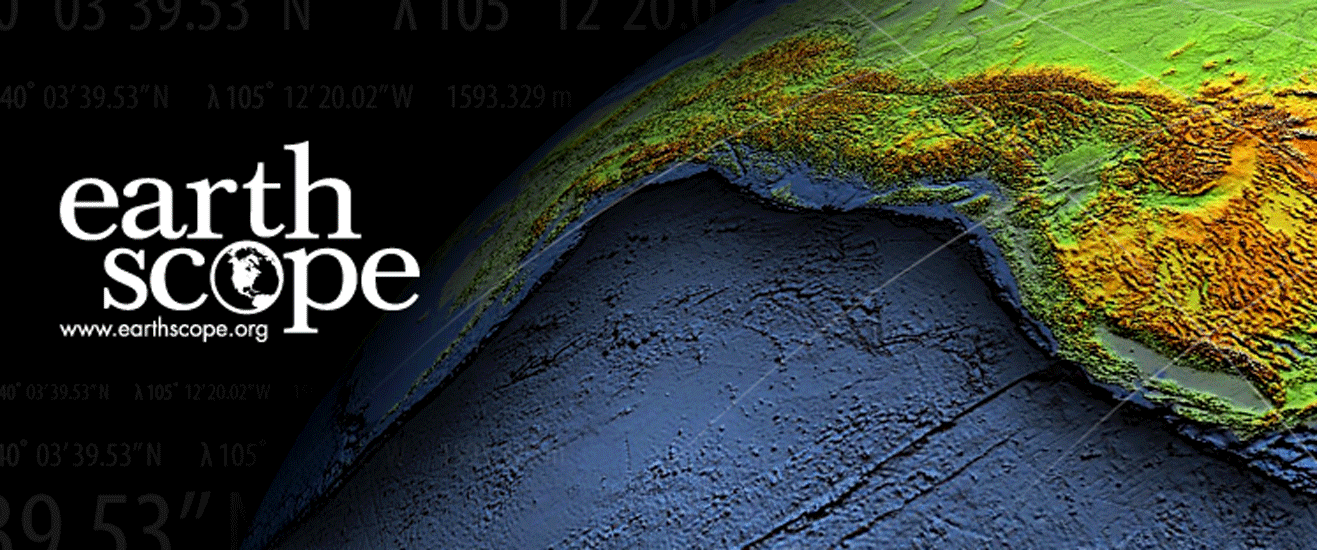by ESNO - Summer 2014
In 2004, the epic undertaking of the EarthScope program became a reality. Over the next ten years, revolutionary scientific results have helped researchers better understand the geologic structure and evolution of North America, the dynamics of the North American-Pacific plate boundary, and the processes that drive earthquakes and volcanoes. Numerous unexpected discoveries and applications of the high quality and open data have also been made. This past May, several hundred individuals, representing a broad cross-section of EarthScope researchers, educators, leaders, and stakeholders, gathered in Washington, D.C. to celebrate a decade of accomplishment by the EarthScope program.
The two-day event included briefings to members of the House and Senate and a Decade Symposium that was hosted at the headquarters of the American Association for the Advancement of Science.

Jeffrey Freymueller (UAF) kicked things off with an Earthscope overview presentation to the House Research and Development Caucus sponsored by the Coalition for National Science Funding. House and Senate briefings included presentations on the EarthScope Program overall, and specific information on the EarthScope facilities from Ramon Arrowsmith (ESNO/ASU), Rowena Lohman (Cornell), Meghan S. Miller (USC), Hersh Gilbert (Purdue), and Mark Simons (Caltech). The briefings were moderated by William Leith (USGS). Various Congressional and Senate staff members attended these presentations.
The Decade Symposium began with plenary presentations on the evolution of the EarthScope facilities along with their current status, scientific accomplishments made possible by the collaborative nature of EarthScope, and on EarthScope’s extensive education and outreach activities. Presenters included M. Meghan Miller (UNAVCO), Robert Detrick (IRIS), Roger Wakimoto (NSF), Ramon Arrowsmith, Steven Semken (ESNO/ ASU), Jeffrey Freymueller, Mark Simons, Meghan S. Miller, Hersh Gilbert, and Heather Savage (Lamont-Doherty Earth Observatory).
The plenary talks were followed by a panel discussion on the Broader Impacts, Policy, and Future of EarthScope featuring representatives of the NSF (Greg Anderson), NASA (John LaBrecque), NOAA (Juliana Blackwell and Ifikhar Jamil), and USGS (William Leith). Over 300 people attended the talks and the panel discussion. The Decade Symposium also featured an exhibit hall where the EarthScope National Office, IRIS, UNAVCO, and SAFOD displayed geoscientific research equipment and multimedia exhibits from USArray, the Plate Boundary Observatory, and a San Andreas Fault drill core replica.
The Decade Symposium concluded with a reception featuring congratulatory and encouraging remarks from Dr. Cora Marrett, the acting director of NSF (see photo).
Linda Rowan (Director of External affairs, UNAVCO) and Ramon Arrowsmith also put together an entry for AGU’s science policy blog The Bridge, to commemorate the event: http://thebridge.agu.org/2014/05/27/earthscope-grand-earth-observing-project-epic-future/.






